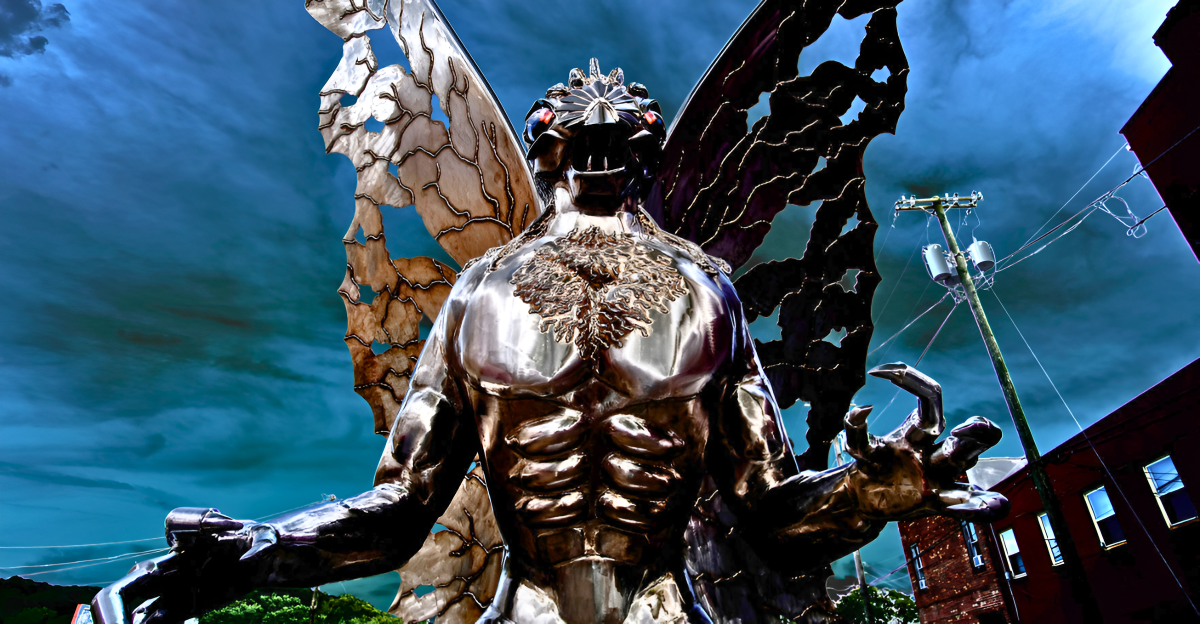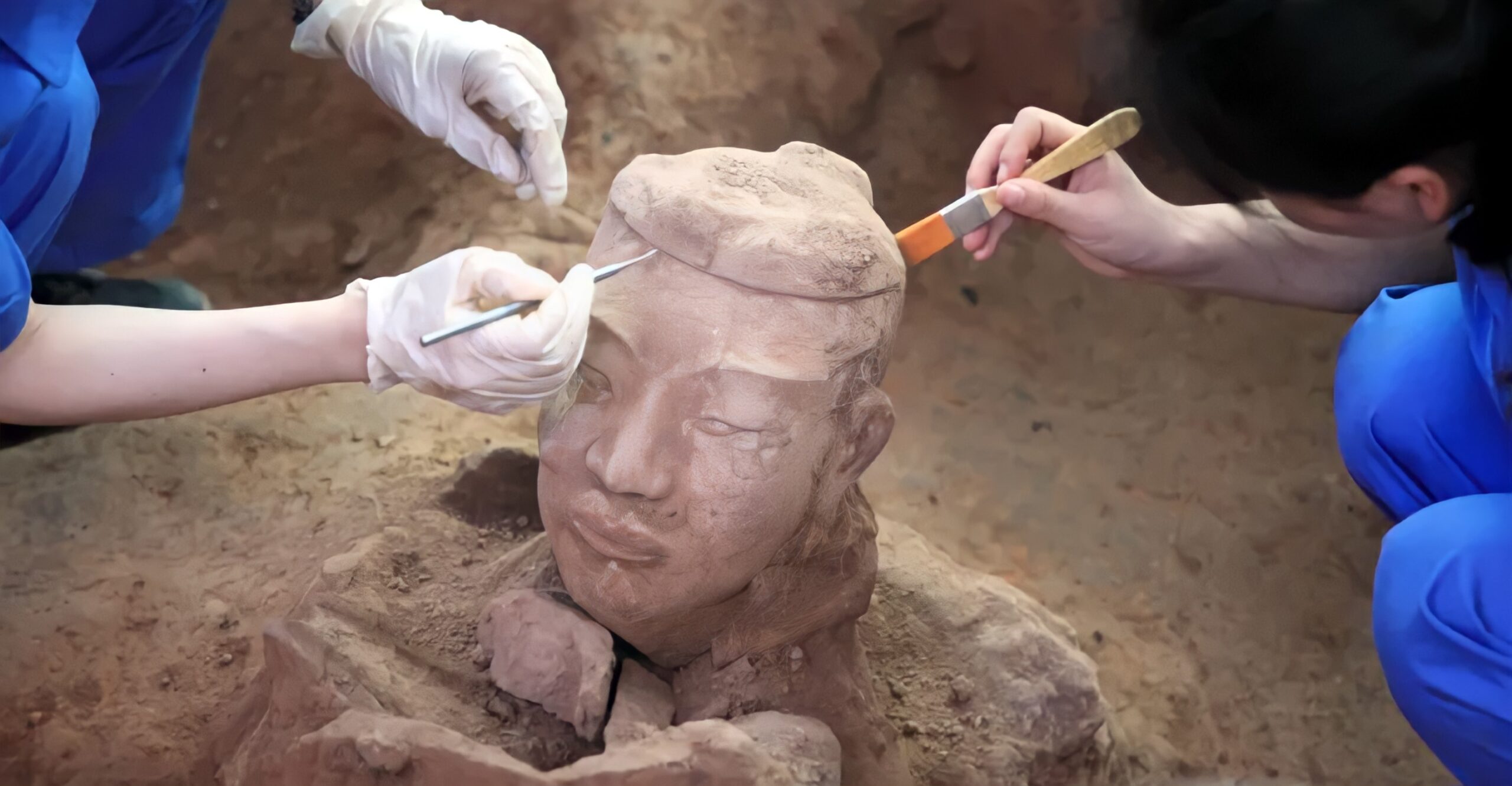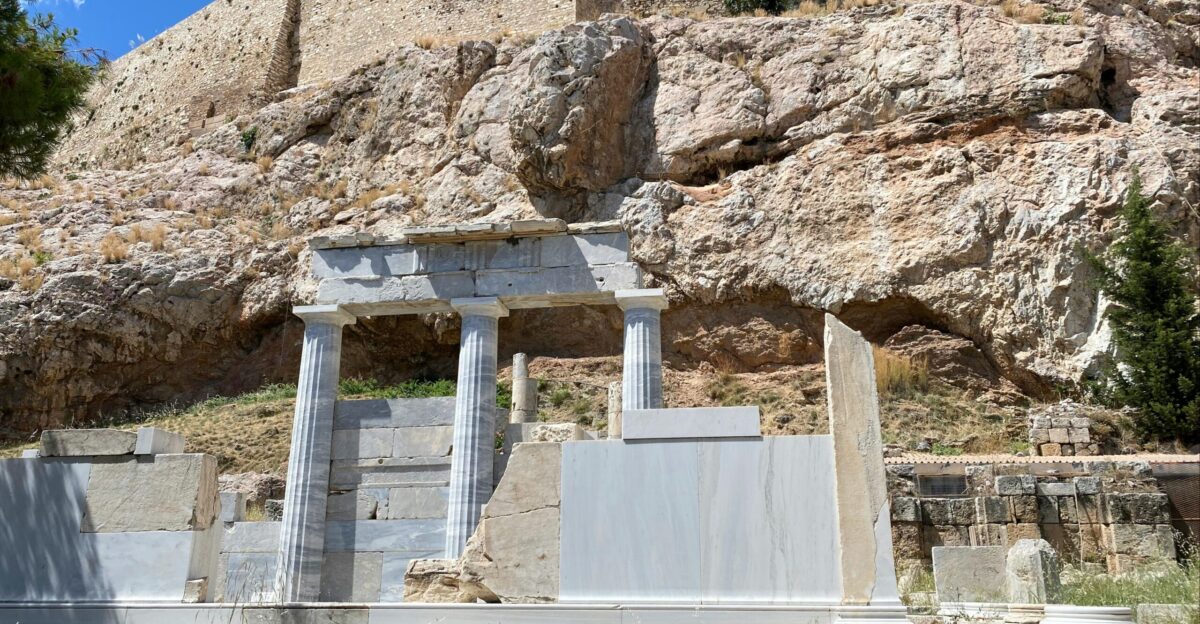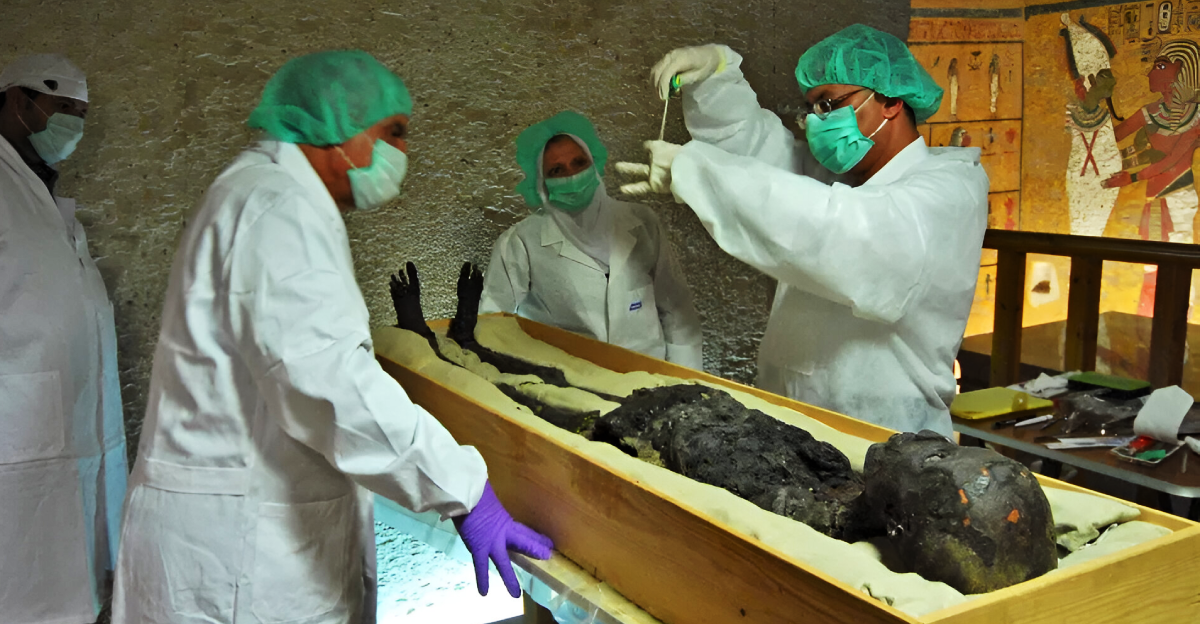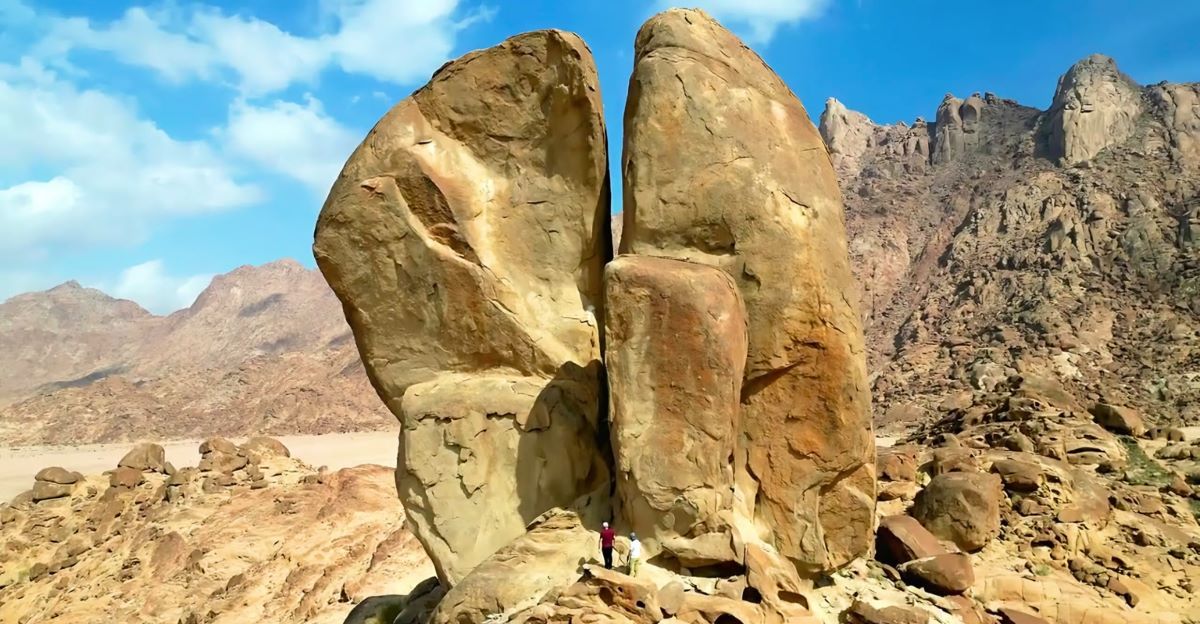
Deep in the northwestern corner of Saudi Arabia, a breathtaking and remarkable marvel stands —Jabal al-Lawz, the “Mountain of Almonds.” For decades, its twin towers and rugged granite domes have captivated explorers and academics.
But beneath its picturesque facade lies a mystery that could rewrite biblical history. Could this ancient mountain be Mount Sinai, the legendary site where Moses received the Ten Commandments?
For centuries, historians and archaeologists have debated the real location but discoveries on this mountain, along with other ancient clues are forcing experts to reconsider everything they thought they knew about one of history’s most sacred sites.
Where was Mount Sinai?
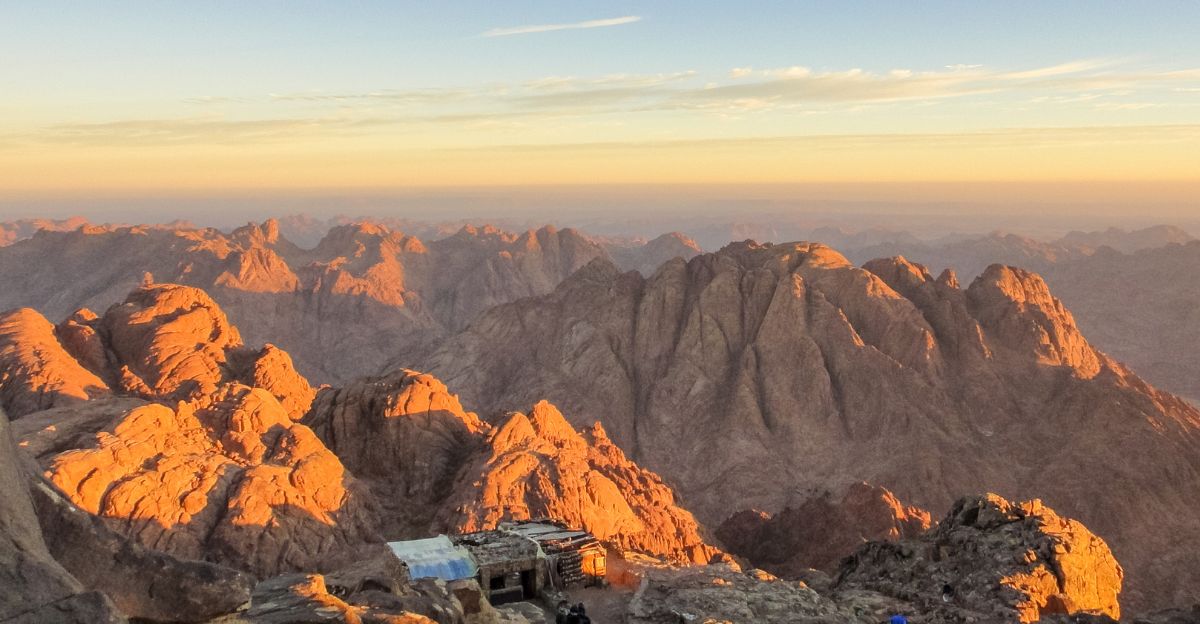
For thousands of years, the traditional site Mount Sinai has been identified with Jebel Musa in the Egypt’s Sinai Peninsula, a place of great religious significance. Yet, a frowing number of researchers argue that the biblical account points to a different region, Midian, which is in modern-day Saudi Arabia.
The book of Exodus describes how Moses led the Israelites through the wilderness to Mount Sinai, though the precise route has long been disputed.
The discovery of a huge split rock at Jabal al-Lawz, and other sites in the region including ancient riverbeds and altars, offers compelling evidence that challenges the long-held belief about the mountain’s true identity.
Unraveling the Clues
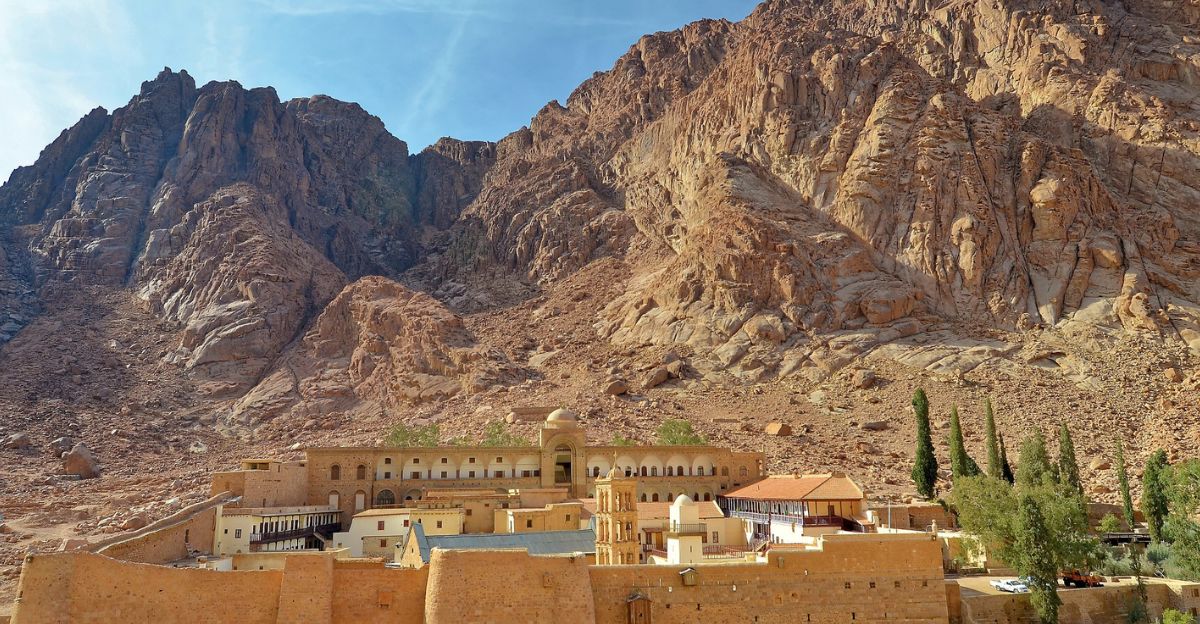
Ancient historians and modern archaeologists have scoured the Middle East for clues to the real Mount Sinai. Satellite imagery, geological surveys, and on-the-ground explorations have revealed striking similarities between Jabal al-Lawz and the biblical description.
Researchers like Joel Richardson and others have found an enormous rock formation that matches the Bible’s description of Moses striking a rock to bring forth water.
Nearby, ancient petroglyphs and stone altars provide further evidence that the site was one of religious importance. These findings are not just academic curiosities — they could reshape our understanding of biblical geography and the origins of monotheistic faith.
A Geological Anomaly
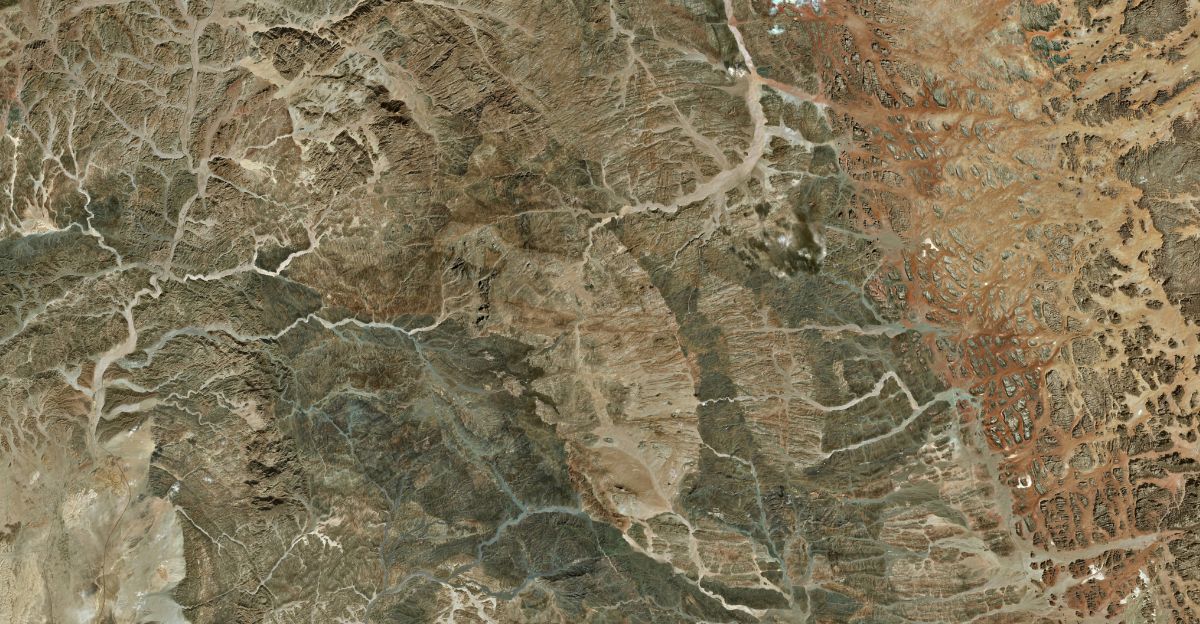
Certainly one of the most dramatic features at Jabal al-Lawz is the Split Rock of Horeb, a huge boulder split in two with large rocks below. The geological anomalystands about 65 feet tall with surrounding rocks that reach 100 feet above the ground.
According to the biblical account, Moses struck a rock to provide water for the Israelites, a miracle some researchers suggest might be reflected in the dramatic appearance of the split rock.
The presence of a nearby dry riverbed adds weight to the theory, suggesting that water once flowed abundantly from this very spot.
Altars, Petroglyphs and the Golden Calf
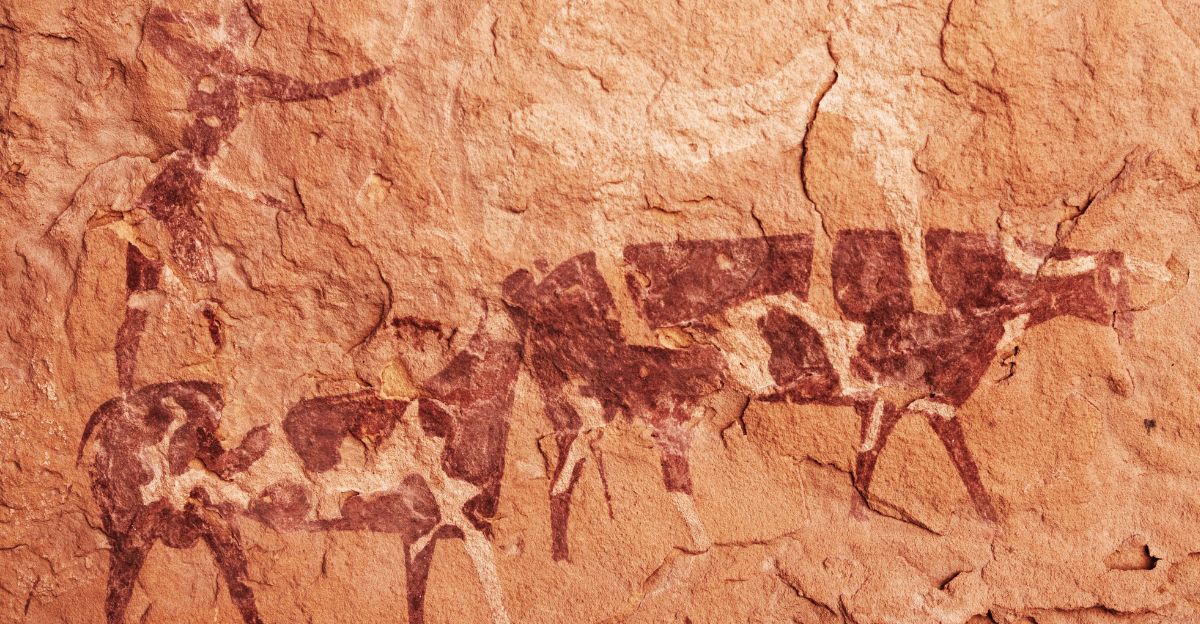
Archaeolgical surveys at the Jabal al-Lawz have uncovered more than just rocks and riverbeds. The rolling landscape is studded with stone altars, thought to have been places of worship in ancient times. Some researchers maintain that these altars are the same as those erected by Moses and the Israelites.
Intriguingly, petroglyphs depicting cows, symbols possibly linked to the golden calf, have been discovered at the base of the mountain.
The findings, combined with paintings of archersguarding the mountain, suggest a site is of profound religious and historical importance, potentially confirming the biblical narrative in a way that no other location has.
The Land of Midian
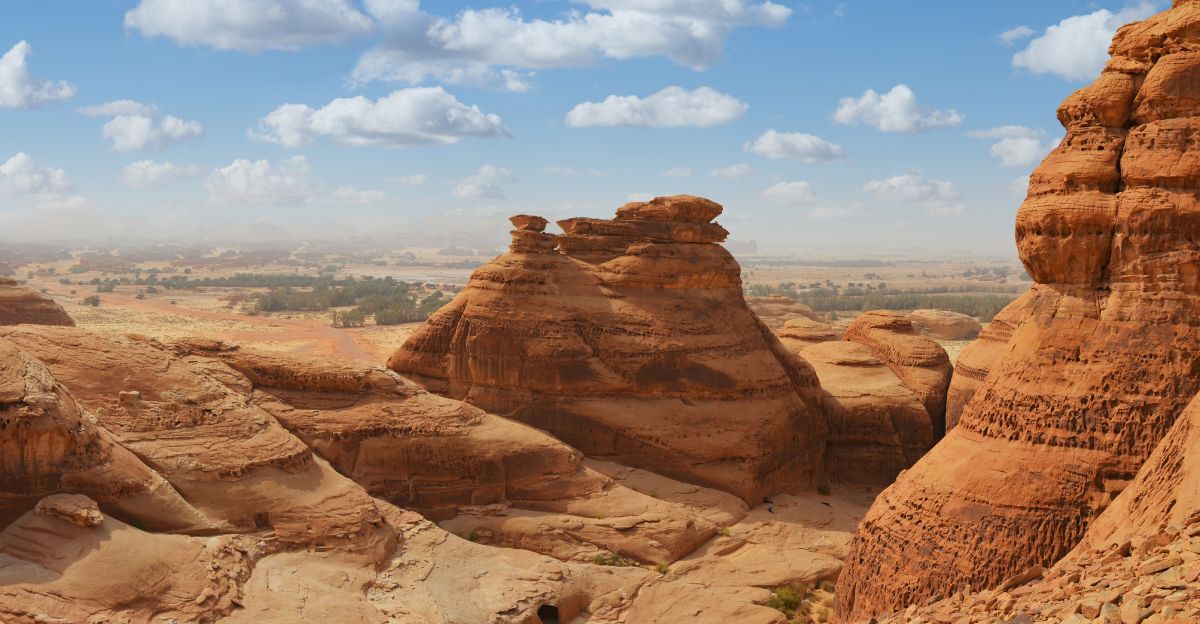
The Biblical account places Moses in the land of Midian before God appears to him at Mount Sinai. Midian is widely believed to be in northwest Saudi Arabia, near Jabal al-Lawz. This geographic alignment is a key oiece for those who insist the mountain is the real Mount Sinai.
The region’s history as a crossroads of ancient trade routes, as well as its association with the Midianites, also lend support to the theory.
If this is true, this would mean that one of the most significant events in religious history took place not in Egypt, but in the heart of Arabia.
Faith, Science, and Tradition
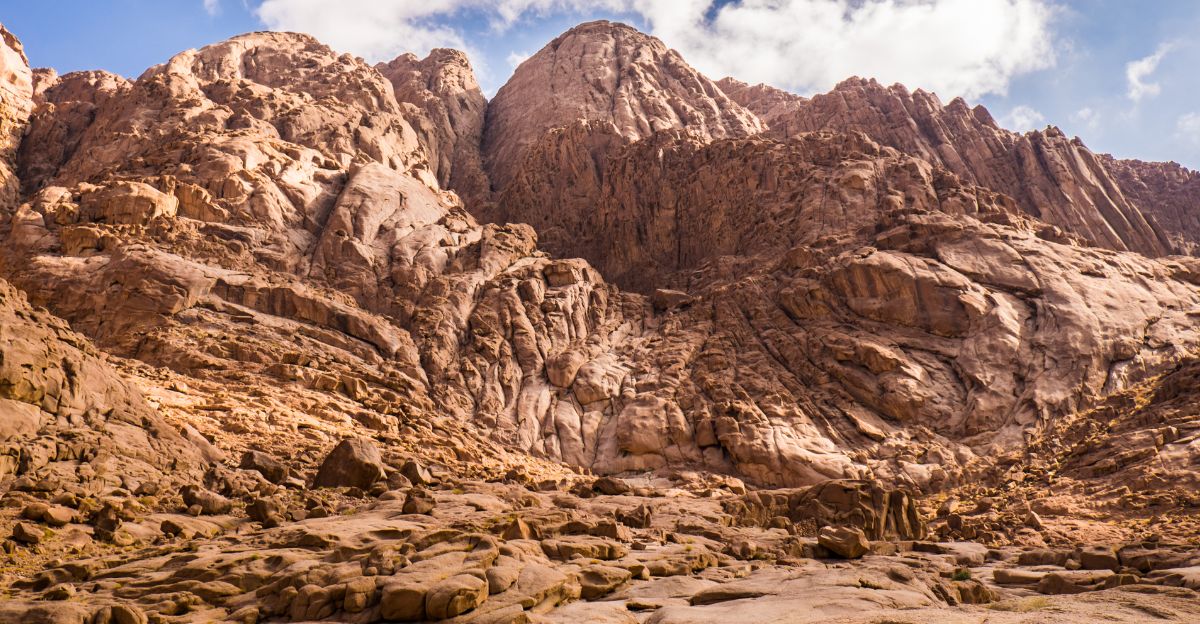
The debate over the true location of Mount Sinai is not just an academic exercise, it’s a clash of faith, science, and tradition. Maintain historians and archaeologists remain skeptical, citing a lack of conclusive evidence and the centuries-old tradition of Jebel Musa as the sacred site.
However, propenents of the Jabal al-Lawz theory argue that distinctive aspects of the mountain, ancients artifacts and alignment with biblical geography a compelling reasons to reconsider.
The controversy highglights the delicate balance between religious belief, historical evidence and human desire for certainty about the past.
The Human Story

Beyond the geological and archaeological evidence, the story of Mount Sinai is one of human faith and transformation. For billions of people, the giving of the Ten Commandments a momentous event in religious history.
Whether the actual location is in Egypt or Saudi Arabia, the quest for Mount Sinai is a search for something more profound, a longing for meaning and spiritual connection.
Whether or not Jabal al-Lawz is in fact the true Mount Sinai, adds a new layer of intrigue bto this ancient story, inviting believers and skeptics alike to re-examine their assumptions about history and faith.
A New Chapter in Biblical Archaeology
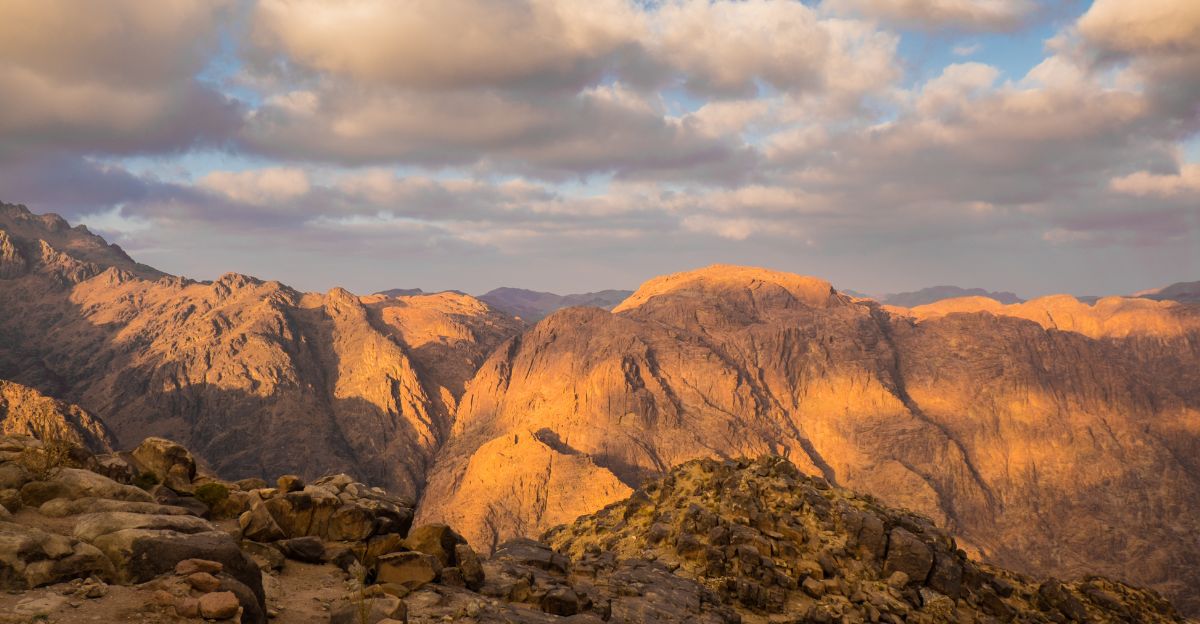
The exploration of Jabal al-Lawz represents a bold new chapter biblical archaeology. But while archaeologists and geologists continue to find and analyze ancient artifacts and geological phenomena, the mystery surrounding the precise whereabouts of Mount Sinai is far from settled.
The Saudi government’s plans to open the site for further research and tourism could yield unprecedented access to the enigmatic site.
For academics, pilgrims and curious travelers, the mountain provides a unique opportunity to walk in the footsteps of Moses and experience the landscape that could have influenced religious history.
What’s Next for Jabal al-Lawz?
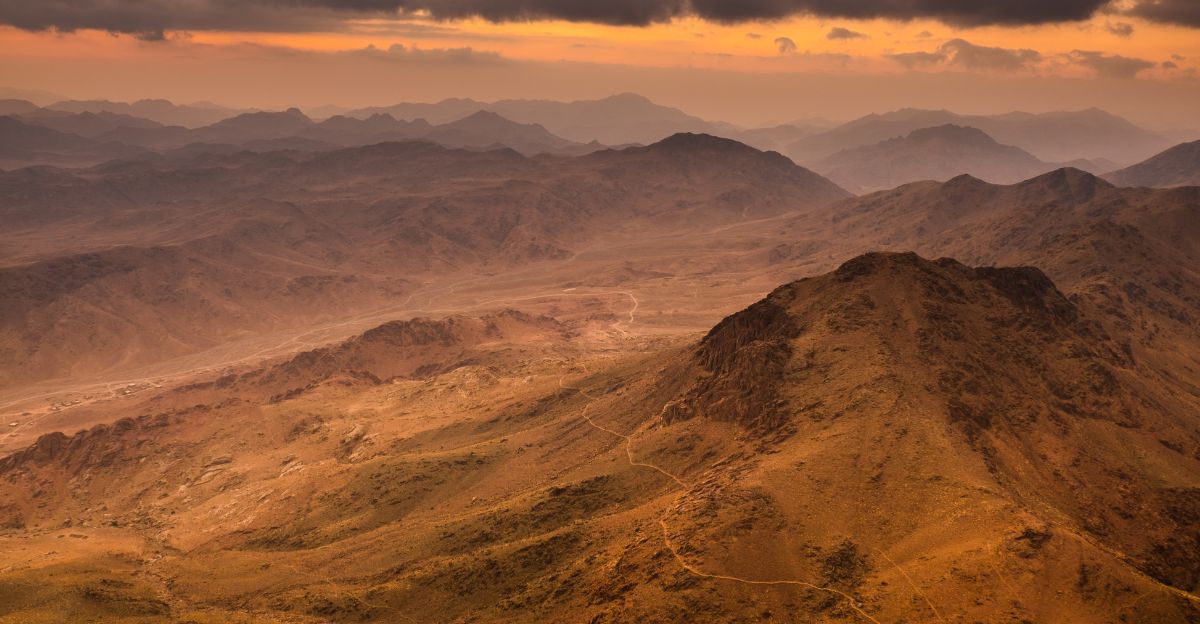
As the evidence mounts and the debate intensifies, one question remains: What’s next for Jabal al-Lawz? Will further revelations confirm it as the actual Mount Sinai, or will new evidence emerge to challenge the theory?
For the time being, the mountain remains a mystery, a reminder that history is never fully written, and the quest for truth is a constant journey.
Whether you’re a believer, a skeptic or just curious, the story of this impossible rock formation in Saudi Arabia is far from over, and the world is watching to see what happensnext.

